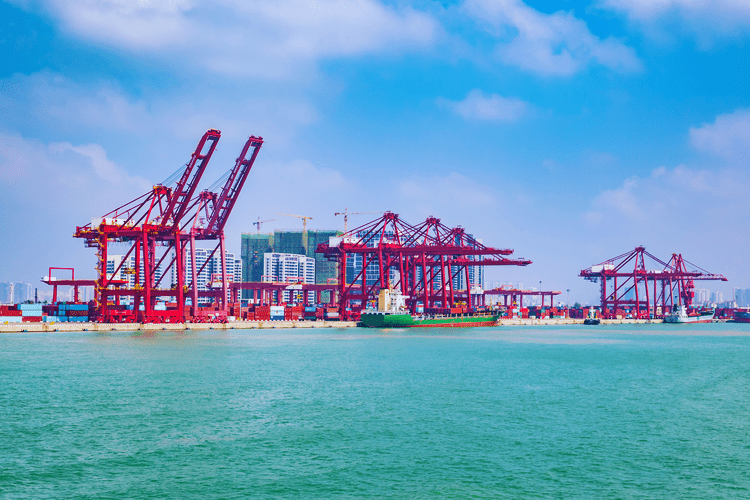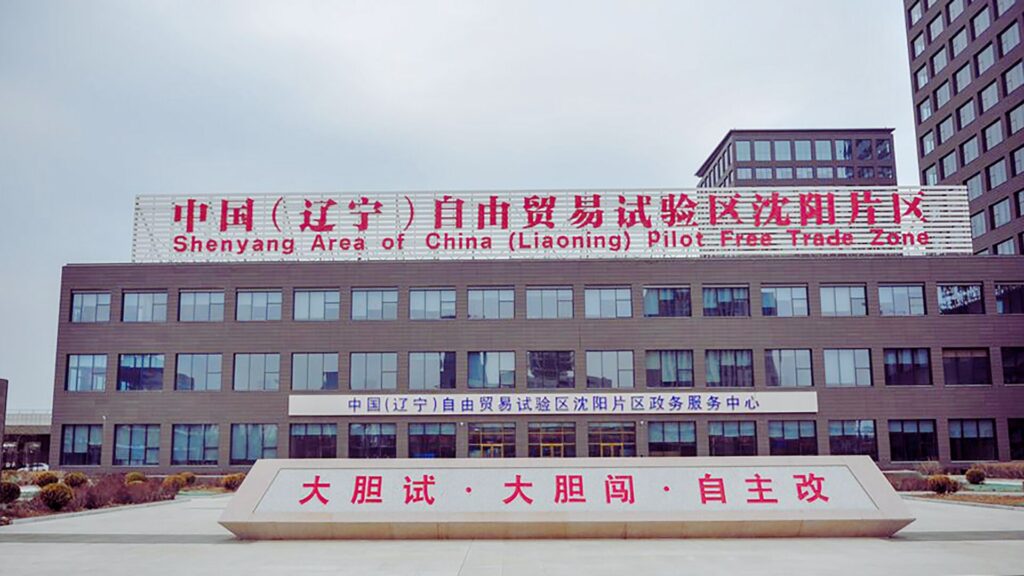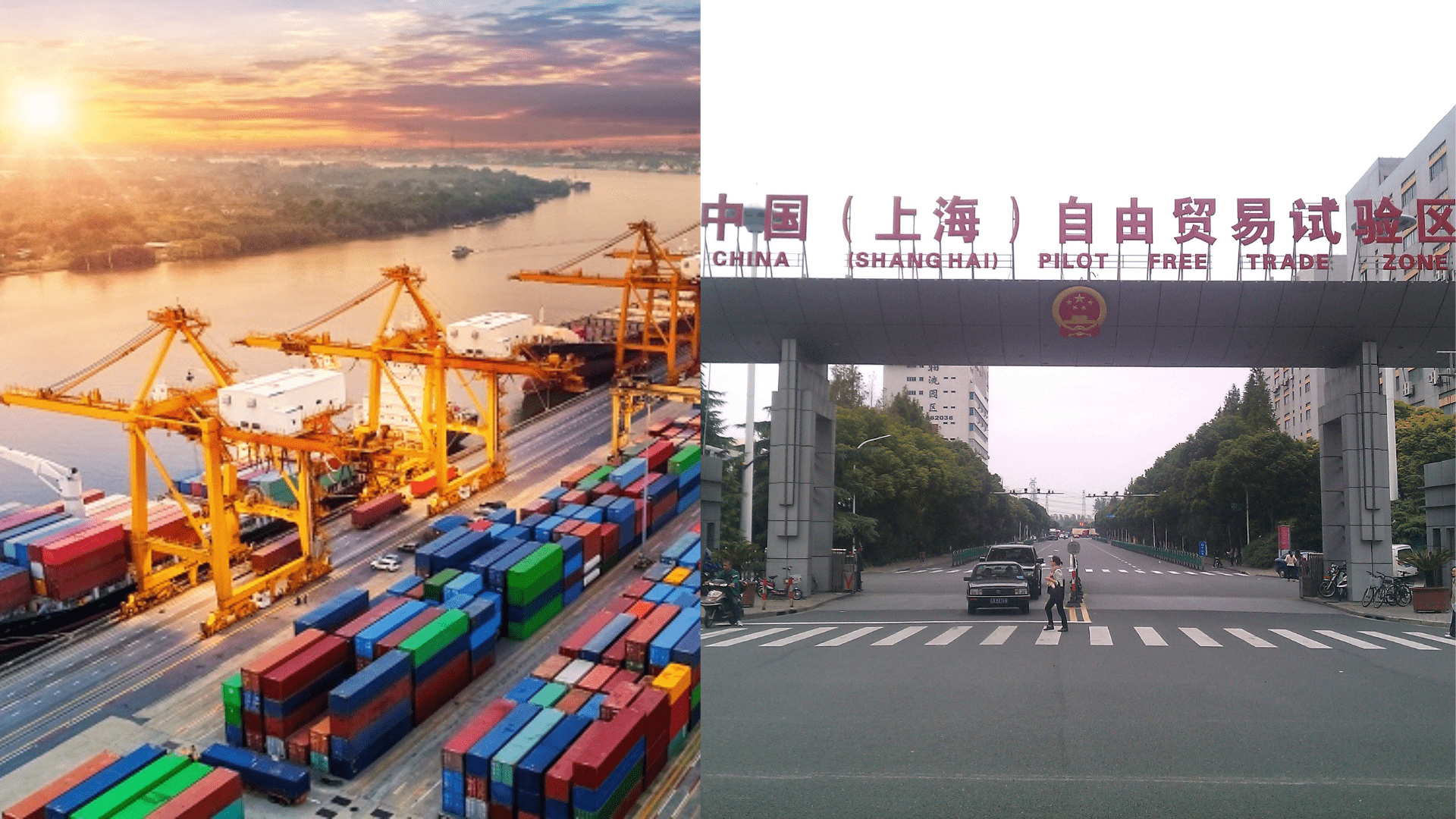Introduction
In the ever-evolving landscape of international trade, China stands as a beacon of economic prowess. To truly understand the dynamics at play, we delve into the question: why were free trade zones created in China? This article unfolds the historical tapestry, shedding light on the driving forces behind these zones and their pivotal role in shaping China’s economic narrative.
The Genesis of Free Trade Zones

China’s Economic Revolution Unveiled
In the latter part of the 20th century, China embarked on a groundbreaking journey of economic reforms that would redefine its place in the global economic landscape. This period marked the unveiling of China’s economic revolution, a strategic and transformative endeavor that would shape the nation’s destiny.
Opening Doors to Foreign Investment
At the heart of China’s economic revolution was the deliberate move to create an environment conducive to foreign investments. The establishment of free trade zones played a pivotal role in dismantling traditional trade barriers, offering an attractive proposition to international investors looking to capitalize on China’s vast market potential.
Pioneering Economic Experimentation
The creation of free trade zones wasn’t merely a policy; it was an economic experiment of grand proportions. These zones became laboratories for testing liberal economic policies, providing a space where innovation and exploration could flourish. China, with its eyes set on progress, encouraged a wave of economic experiments within these designated areas.
Fostering Innovation and Growth
Within the confines of free trade zones, China witnessed the birth of innovation hubs and the rapid development of industries. By offering incentives, tax breaks, and reduced regulatory constraints, the government aimed to foster an atmosphere where businesses could thrive, sparking a wave of technological advancements and economic growth.
A Catalyst for Global Competitiveness
China’s economic revolution, fueled by the creation of free trade zones, wasn’t just a domestic affair. It propelled the nation onto the global stage, positioning it as a competitive player in the international market. These zones became symbols of China’s commitment to openness, heralding an era of economic integration and collaboration.
Shaping the Future
The economic revolution unleashed within the free trade zones laid the foundation for China’s meteoric rise. It was a calculated risk that paid off, positioning China as a global economic powerhouse. The lessons learned from this period continue to shape economic policies, providing valuable insights into the delicate balance between innovation, regulation, and international collaboration.
In summary, China’s economic revolution, unveiled through the creation of free trade zones, was a strategic and transformative process that not only reshaped the nation’s economic landscape but also sent ripples across the globe, marking China as a force to be reckoned with in the 21st century.
Economic Liberation and Foreign Investments

Central to China’s economic metamorphosis was the strategic embrace of economic liberalization, a move that would redefine the nation’s economic dynamics. This shift in policy was accompanied by a deliberate focus on attracting foreign investments, marking a critical juncture in China’s journey toward becoming a global economic powerhouse.
Dismantling Trade Barriers
The cornerstone of economic liberation was the systematic dismantling of traditional trade barriers. China, recognizing the need for a more open and globally connected economy, took bold steps to reduce tariffs, simplify customs procedures, and create an environment conducive to international trade. This set the stage for the establishment of free trade zones as incubators for economic experimentation.
Foreign Investments as Catalysts for Growth
Attracting foreign investments became a linchpin in China’s economic strategy. Free trade zones, with their relaxed regulations and enticing incentives, became magnets for global investors seeking to capitalize on the vast opportunities within China’s borders. The government’s proactive measures aimed to stimulate economic growth, create jobs, and transfer technological know-how.
Symbiotic Relationships
The influx of foreign investments not only injected capital into the Chinese economy but also forged symbiotic relationships between local and international businesses. Joint ventures and collaborations became commonplace within the free trade zones, fostering a dynamic environment where the exchange of ideas and expertise propelled industries forward.
Strategic Alignment with Global Markets
China’s economic liberation wasn’t a unilateral move; it was a strategic alignment with global markets. By opening its doors to foreign investments, China signaled its intent to integrate into the global economic ecosystem. This integration not only bolstered the nation’s economic growth but also positioned it as a key player in the interconnected world of trade and commerce.
Balancing Act: Regulation and Innovation
While economic liberalization was a catalyst for growth, the Chinese government maintained a delicate balance between openness and regulation. This approach ensured that the benefits of foreign investments were harnessed without compromising on regulatory control. The result was a harmonious coexistence between international business practices and China’s regulatory framework.
In conclusion, the marriage of economic liberation and foreign investments, exemplified by the creation of free trade zones, played a pivotal role in China’s emergence as an economic giant. This strategic shift not only propelled the nation into the global spotlight but also set a precedent for other economies to reconsider their approaches to economic development and international collaboration.
Unveiling the Dynamics

Special Economic Zones (SEZs) vs. Free Trade Zones (FTZs)
Deciphering the Nuances
In the realm of economic policies, Special Economic Zones (SEZs) and Free Trade Zones (FTZs) stand out as distinct strategies, each with its own set of objectives and nuances. Understanding the differences between these two concepts is crucial for unraveling the intricate tapestry of China’s economic landscape.
Special Economic Zones (SEZs)

Focus on Comprehensive Development
Special Economic Zones, commonly known as SEZs, are designated regions where the government implements targeted economic policies to promote comprehensive development. These policies often encompass a broader spectrum, including industrial, commercial, residential, and infrastructural aspects. SEZs aim to create self-sustaining ecosystems that contribute to the overall economic growth of a region.
Incentives for Diverse Industries
SEZs typically offer a wide range of incentives to attract domestic and foreign businesses. These may include tax breaks, simplified regulations, and infrastructure development. The goal is to encourage a diverse array of industries to thrive within the designated zone, fostering innovation, employment, and economic diversification.
Holistic Approach to Economic Transformation
The creation of SEZs reflects a holistic approach to economic transformation. By focusing on the multifaceted development of a specific region, SEZs aim to uplift the standard of living, enhance infrastructure, and create an environment conducive to both business and community growth.
Free Trade Zones (FTZs)

Streamlined Trade Facilitation
Free Trade Zones, or FTZs, are specialized areas designed to streamline international trade by reducing or eliminating barriers and restrictions. Unlike SEZs, which emphasize comprehensive development, FTZs specifically target the facilitation of trade. These zones prioritize efficiency in logistics, customs procedures, and overall trade-related activities.
Easing Trade Restrictions
The primary objective of FTZs is to attract businesses engaged in import and export activities. To achieve this, trade restrictions within these zones are significantly eased. This includes relaxed customs regulations, simplified import-export procedures, and often a more favorable tax environment for businesses engaged in international trade.
Strategic Locations for Global Commerce
FTZs are strategically located in key areas to maximize their impact on global commerce. These zones often serve as pivotal hubs for international trade, connecting major shipping routes and transportation networks. The strategic positioning enhances the efficiency of logistics and contributes to the overall competitiveness of businesses operating within the FTZ.
Key Distinctions
In summary, the key distinction between SEZs and FTZs lies in their primary objectives. SEZs focus on comprehensive regional development, encompassing various aspects of the economy, while FTZs prioritize the facilitation of international trade by easing restrictions and optimizing logistics. Both concepts, however, play crucial roles in China’s economic strategy, contributing to the nation’s dynamic and globally influential economic landscape.
Why Were Free Trade Zones Created in China?

The Pinnacle of Global Commerce
Enhancing International Trade
At the forefront of China’s economic strategy stands the concept of free trade zones (FTZs), propelling the nation to the pinnacle of global commerce. The creation of these zones was not merely an economic experiment; it was a calculated move to position China as a central player in the interconnected web of international trade.
Strategic Global Integration
China’s free trade zones are strategically positioned at key junctures, serving as gateways to the global marketplace. By facilitating trade with reduced barriers and streamlined processes, these zones have become epicenters of economic activity, fostering a seamless flow of goods and services across borders.
Catalyzing Economic Growth
The impact of free trade zones on China’s economic growth cannot be overstated. These zones have not only attracted foreign investments but have also served as catalysts for technological advancements, innovation, and the creation of a vibrant business ecosystem.
Harmony in Diversity
One of the hallmarks of these zones is their ability to harmonize diverse industries. From manufacturing and technology to services and logistics, free trade zones provide a melting pot where businesses from various sectors converge, collaborate, and thrive. This synergy has contributed to the dynamic and diversified nature of China’s global trade contributions.
Global Competitiveness Unleashed
China’s free trade zones have unleashed a new era of global competitiveness. By embracing openness and actively engaging with the international community, China has positioned itself as a preferred destination for businesses looking to expand their global footprint. The zones act as incubators for businesses to test and adapt to the dynamics of the global market.
Innovative Policies for International Collaboration
The policies within these zones are designed to foster international collaboration. With incentives such as reduced tariffs, simplified customs procedures, and favorable tax environments, China invites businesses to participate in a mutually beneficial relationship. This not only benefits the businesses operating within the zones but also contributes to the broader global economic landscape.
Shaping the Future of Global Trade
As we stand at the nexus of global commerce, it is evident that China’s free trade zones play a pivotal role in shaping the future of international trade. The harmonization of diverse industries, strategic integration with global markets, and the catalyzation of economic growth position these zones as beacons of progress in a rapidly evolving economic landscape.
In conclusion, the creation of free trade zones represents China’s commitment to not only participating in but leading the charge in global commerce. These zones are not just geographical entities; they are dynamic ecosystems that embody the spirit of collaboration, innovation, and progress on the world stage.
Conclusion
In unraveling the complexities of why free trade zones were created in China, we witness the intricate dance between economic strategy and global ambition. These zones, a testament to China’s commitment to progress, have not only shaped the nation’s destiny but have also left an indelible mark on the global economic stage.
Read also: Why Were Idealistic Supporters of the Nazi Party Willing to Endorse Hitler’s Annexation of Austria?
FAQ’s: Unraveling Common Queries
Q: How did free trade zones impact China’s economy positively?
Free trade zones attracted foreign investments, spurring economic growth, technological advancements, and job creation.
Q: Were there challenges faced during the implementation of free trade zones in China?
Initially, regulatory hurdles and skepticism posed challenges, but over time, the zones proved instrumental in overcoming these obstacles.
Q: What role did government policies play in the success of free trade zones?
Forward-thinking policies and regulatory flexibility were instrumental in unleashing the full potential of these zones.
Q: Did free trade zones contribute to technological advancements in China?
Yes, the zones played a pivotal role in fostering technology transfers and collaborations, catapulting China into the technological forefront.
Q: How did free trade zones impact employment in China?
The zones not only attracted foreign companies but also stimulated job creation, contributing significantly to employment rates.
Q: What is the global significance of China’s free trade zones?
China’s free trade zones serve as exemplars of successful economic experimentation, influencing global economic policies and trade dynamics.




